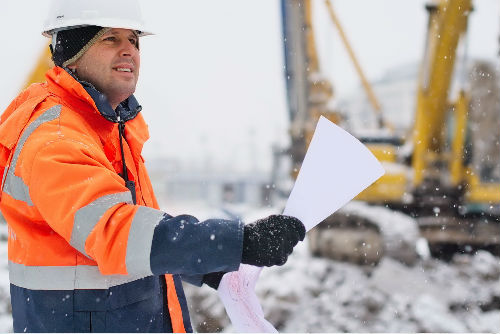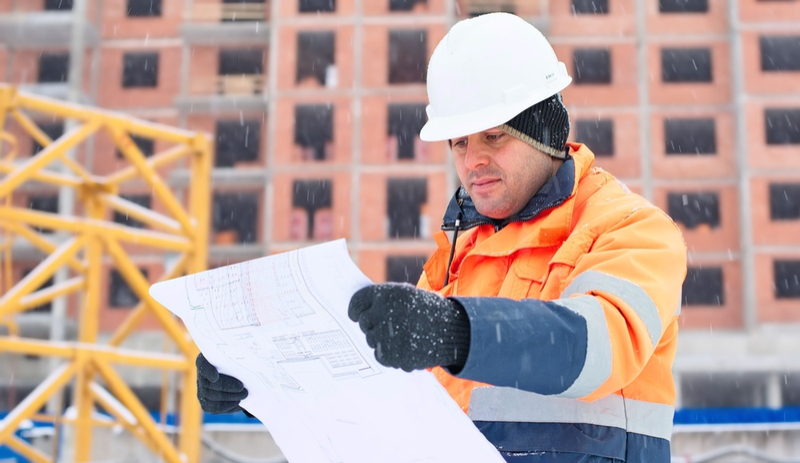High-Visibility Jackets 101: Stay Seen, Stay Safe
When working on the roadside or on a busy construction site, all workers must be clearly visible at all times to reduce the risk of accidents.
High-vis clothing was first trialled by railway workers in the 1960s. Since then, high-visibility work jackets have been an efficient solution, trusted by industrial workers across the UK.
Read on for expert guidance about the types of hi-vis jackets available on the market and how to choose the best type for your needs.

Why are high-visibility jackets important?
High vis jackets are a form of personal protective equipment (PPE) for worksites. They are designed to enhance site safety, not fashion, and serve multiple purposes.
High-visibility jackets can:
- Keep workers visible at all times, even in low light, bad weather, and crowded conditions. This is thanks to their fluorescent colouring and reflective tape lining.
- Prevent accidents by offering extra visibility. This can help prevent collisions by giving drivers and machine operators more time to react to hazards.
- Keep workers dry, warm, and comfortable during long, outdoor shifts. Many jackets feature breathable fabrics and durable finishes designed to withstand rigorous daily use.
- Support regulatory compliance if the jacket is designed to EN ISO 20471 standards.
At phs Besafe, our Bright Gear range includes high-visibility jackets with an unbeatable lifespan, offering users comfort, high quality, and safety assurance, no matter the task or time of day.
What compliance standards matter when buying a high vis jacket?
Under UK law, all high-vis clothing must comply with EN ISO 20471, which is the international standard for high-visibility clothing.
This standard outlines the minimum requirements for the performance and placement of the fluorescent and retro-reflective materials of high-vis jackets, ensuring they provide clear visibility in various conditions and hazardous environments.
Common examples of where a high-vis jacket would be required include:
- Construction sites
- Roadside work sites
- Railways
- Airports
- Warehouses
- Factories
- Public areas
- Utility sites
- Emergency settings (police, fire, ambulance, etc.)

What are the different types of high vis jackets?
There are plenty of high-visibility jacket styles to choose from, so you’re sure to find one to suit your coverage and comfort needs. The most popular high-visibility jacket styles include bomber jackets, parkas, and hi-vis waterproof jackets.
Hi-vis classes and what they mean
It’s also important to understand the EN ISO 20471 standards and how these affect your choice of high-visibility jacket. There are three classification levels for high-visibility workwear, each one indicating the amount of protection provided. These levels are based on the amount of fluorescent and retro-reflective material present on each garment.
Class 1: Lowest protection
Minimums: 0.14m² fluorescent material and 0.10 m² reflective tape.
Garments suitable for low-risk environments, such as warehouses where slow-moving vehicles operate. Class 1 high-visibility jackets offer the lowest amount of visibility protection that is legally permissible, so they should only be used in low-risk settings.
Class 2: Intermediate protection
Minimums: 0.50 m² fluorescent material and 0.13 m² reflective tape.
Garments suitable for moderate-risk areas, where there is moderate traffic or machine activity present.
Class 3: Highest protection
Minimums: 0.80 m² fluorescent material and 0.20 m² reflective tape.
Garments suitable for the most dangerous environments that pose the highest risk to worker safety, such as motorways, airports, and railways.
Class 3 protection can also be achieved by combining two or more high-visibility garments together to meet the Class 3 minimums.
What do different hi-vis jacket colours mean?
When searching for the best high-visibility jackets to purchase, you may notice that there are many hi vis colours available.
- Fluorescent yellow or lime green: Commonly used and best suited to low-light conditions and work settings against dark backgrounds or in urban areas.
- Fluorescent orange or orange-red: Mainly used in rural environments for visibility against green backgrounds due to its high contrast. Common for railway, construction, and road settings.
- Fluorescent red: Less common but sometimes used by specialist workers.
However, it is important to note that only specific yellow, red-orange, and red hi-vis material colours are fully compliant with EN ISO 20471 safety standards. Blue, pink, and green high-vis jackets are not certified under these standards, unlike the garments featured in our Bright Gear range.
Invest in high-quality, high-visibility jackets from phs Besafe
At phs Besafe, we’re proud to be the leading supplier of PPE and high-visibility workwear in the UK.
Browse our range, and choose from our Premium Bright Gear Jacket and our Standard Bright Gear Jacket, both of which boast a fully compliant Class 3 rating for your peace of mind.
Our specialist laundry service is also available to preserve the waterproof fabric of your staff’s high-vis jackets for as long as possible. Our specialists launder 1.2 million workwear garments every year.
For more information, don’t hesitate to contact our team.